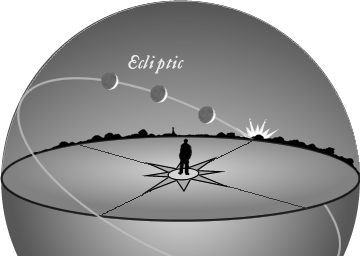Introduction
The term Jaeger Moon that appears in later iterations of this hoax doesn’t appear to have any relevance to astronomy, though ‘Jaeger’ is German for Hunter so it may have been created when a German translation of this hoax began to spread.
result is that there’s a shorter-than-usual lag time between successive moonrises around the full Hunter’s Moon.
These early evening moonrises are what make every Hunter’s Moon special. Every full moon rises around sunset. After the full Hunter’s Moon, you’ll see the moon ascending in the east relatively soon after sunset for a few days in a row at northerly latitudes.
If you’re in the Northern Hemisphere, look for the moon to be bright and full-looking for several nights beginning around October 11 and 12. Keep watching on October 13 and 14. Around all of these nights, you’ll see a bright round moon in your sky, rising around the time of sunset, highest in the middle of the night.

Here in the Northern Hemisphere, it’s autumn now. That means the ecliptic – or sun and moon’s path – makes its narrowest angle with your horizon in early evening. Image via ClassicalAstronomy.com.









0 Comments